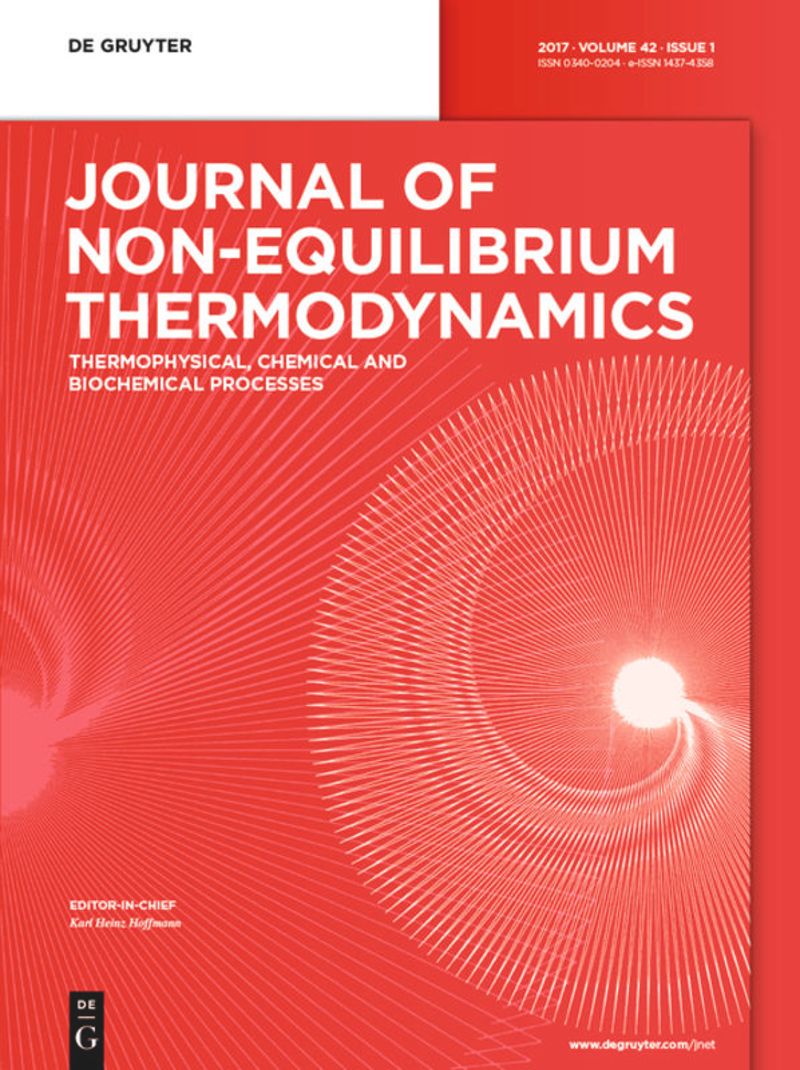热对流系统的模式形成:时空热统计、紧急通量和局部平衡
IF 4.3
3区 工程技术
Q1 MECHANICS
引用次数: 2
摘要
摘要我们讨论了两个独立的热对流系统中时空模式的形成。在第一个系统中,对环形通道中的热液波(HTW)进行了数值模拟。跨通道施加温差,这在流体的自由表面上引起表面张力梯度,导致表面流向冷侧。流动模式沿温度梯度轴向对称,具有小温差的内部循环。这种轴对称流(ASF)在超过给定的温差阈值时变得不稳定,随后,对称破坏流,即。 e.出现旋转振荡波或HTW。对于第二个系统,在非湍流状态下对瑞利–贝纳德对流(RBC)进行了实验研究。当液体薄膜被加热时,粘性和浮力的竞争力会产生对流不稳定性。这种对流不稳定性在流体膜的表面上产生了时空不均匀的温度分布。当“有序”和“无序”相分离时,在这两个系统中都研究了表面温度统计。尽管在这两种情况下产生对流不稳定性的机制不同,但我们在这些出射结构中的热分布的宏观性质上达成了一致。本文章由计算机程序翻译,如有差异,请以英文原文为准。
Pattern Formation in Thermal Convective Systems: Spatio-Temporal Thermal Statistics, Emergent Flux, and Local Equilibrium
Abstract We discuss spatio-temporal pattern formation in two separate thermal convective systems. In the first system, hydrothermal waves (HTW) are modeled numerically in an annular channel. A temperature difference is imposed across the channel, which induces a surface tension gradient on the free surface of the fluid, leading to a surface flow towards the cold side. The flow pattern is axially symmetric along the temperature gradient with an internal circulation for a small temperature difference. This axially symmetric flow (ASF) becomes unstable beyond a given temperature difference threshold, and subsequently, symmetry-breaking flow, i. e., rotational oscillating waves or HTW appear. For the second system, Rayleigh–Bénard convection (RBC) is experimentally studied in the non-turbulent regime. When a thin film of liquid is heated, the competing forces of viscosity and buoyancy give rise to convective instabilities. This convective instability creates a spatio-temporal non-uniform temperature distribution on the surface of the fluid film. The surface temperature statistics are studied in both these systems as “order” and “disorder” phase separates. Although the mechanisms that give rise to convective instabilities are different in both cases, we find an agreement on the macroscopic nature of the thermal distributions in these emergent structures.
求助全文
通过发布文献求助,成功后即可免费获取论文全文。
去求助
来源期刊
CiteScore
9.10
自引率
18.20%
发文量
31
审稿时长
1 months
期刊介绍:
The Journal of Non-Equilibrium Thermodynamics serves as an international publication organ for new ideas, insights and results on non-equilibrium phenomena in science, engineering and related natural systems. The central aim of the journal is to provide a bridge between science and engineering and to promote scientific exchange on a) newly observed non-equilibrium phenomena, b) analytic or numeric modeling for their interpretation, c) vanguard methods to describe non-equilibrium phenomena.
Contributions should – among others – present novel approaches to analyzing, modeling and optimizing processes of engineering relevance such as transport processes of mass, momentum and energy, separation of fluid phases, reproduction of living cells, or energy conversion. The journal is particularly interested in contributions which add to the basic understanding of non-equilibrium phenomena in science and engineering, with systems of interest ranging from the macro- to the nano-level.
The Journal of Non-Equilibrium Thermodynamics has recently expanded its scope to place new emphasis on theoretical and experimental investigations of non-equilibrium phenomena in thermophysical, chemical, biochemical and abstract model systems of engineering relevance. We are therefore pleased to invite submissions which present newly observed non-equilibrium phenomena, analytic or fuzzy models for their interpretation, or new methods for their description.

 求助内容:
求助内容: 应助结果提醒方式:
应助结果提醒方式:


